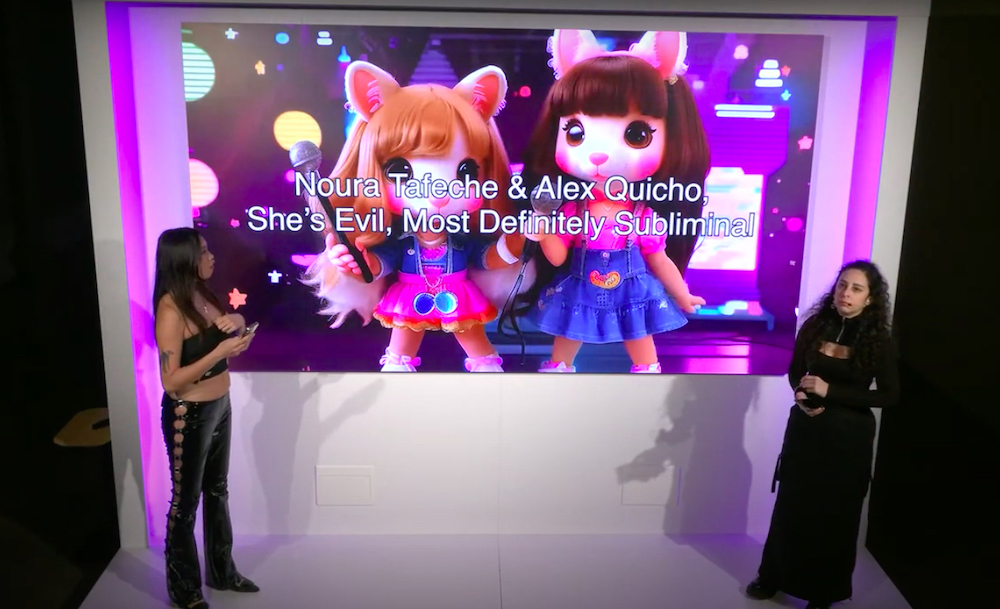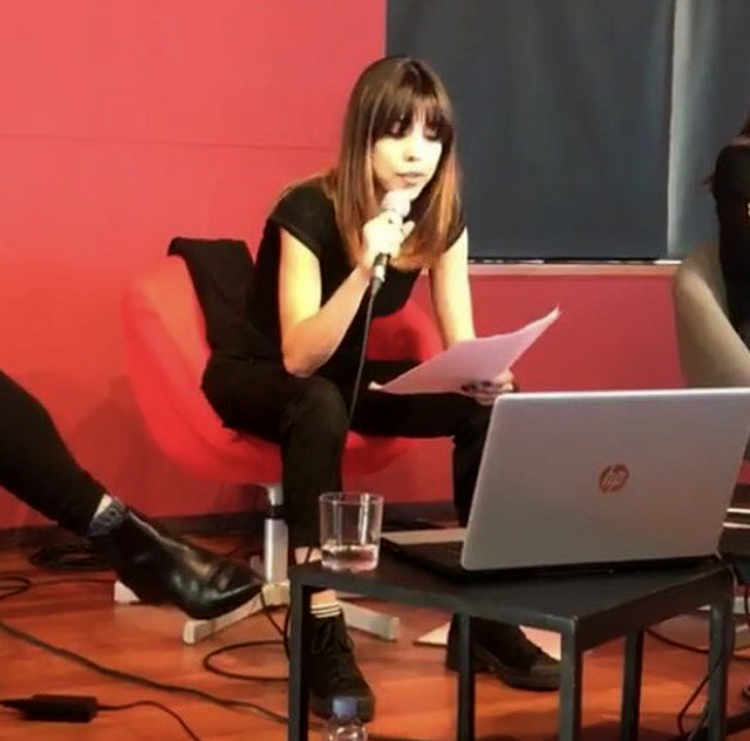Search
To search for an exact match, type the word or phrase you want in quotation marks.
A*DESK has been offering since 2002 contents about criticism and contemporary art. A*DESK has become consolidated thanks to all those who have believed in the project, all those who have followed us, debating, participating and collaborating. Many people have collaborated with A*DESK, and continue to do so. Their efforts, knowledge and belief in the project are what make it grow internationally. At A*DESK we have also generated work for over one hundred professionals in culture, from small collaborations with reviews and classes, to more prolonged and intense collaborations.
At A*DESK we believe in the need for free and universal access to culture and knowledge. We want to carry on being independent, remaining open to more ideas and opinions. If you believe in A*DESK, we need your backing to be able to continue. You can now participate in the project by supporting it. You can choose how much you want to contribute to the project.
You can decide how much you want to bring to the project.

Radical Cuteness is a term that fuses adorableness with a deep political critique. This concept was developed by various contemporary researchers and artists in relation to cuteness, that is, things that are cute, adorable, cuddly, round and soft, tiny, plush or with the face of a kitten. You all know what I mean and I’m sure everyone has some images in their head, but before we get into them, here are four notes to get us onto the same page.
I’d like to share with you some ideas from the cultural theorist Sianne Ngai, author of Our Aesthetic Categories: Zany, Cute, Interesting (2012). These categories, which might seem superficial, reflect aesthetic sensibilities linked to specific social and labor conditions of late capitalism and the new forms of contemporary power and horror. In particular, her analysis of “cute” has been fundamental to developing what we now call Radical Cuteness.
Cute refers to objects that are small, simple, innocent and often vulnerable or defenseless. Cute is related to an aesthetic of weakness, which can inspire both affection and a desire for protection. But “cute” also has an ambivalent and critical dimension, as the charm of “tenderness” can hide relations of power and domination. Ngai points out that cuteness implies a caring response towards something that seems helpless but which can also be exploitative by reducing the object to something infantilised or passive, similar to categories such as the uncanny.
But, what exactly does Radical Cuteness mean? At first glance, cuteness is associated with weakness, childishness or passivity, something that does not seem to carry any political weight. However, Ngai, along with Simon May and others, reveals how this aesthetic has a much more complex political charge since cuteness, far from being innocuous, can become a tool of power. This is where the idea of “radical” comes in.
The term Radical Cuteness refers to how adorableness can be used in a subversive way, challenging social norms, gender roles, and power structures, by combining cuteness with resistance or social criticism. This is somewhat similar to the aesthetics that we have seen in 2024 with the proliferation of Tik Tok videos with the hashtag #sylvaniandrama in which users, especially millennials and zetas, open surprise envelopes of mini families of bunnies, squirrels, bears, ducks and baby ducks. Many of us played with these more than twenty years ago but they have now reappeared in the form of drama of heteronormativity and the nuclear family that explodes when the platform’s users decide to reinterpret those values from the perspective of queer culture and neurodiversity, reformulating certain stereotypes of femininity, as well. The journalist Ana Marco mentioned this in a cultural article in El País published July 26, but it is also mentioned by Momu & No Es, the artistic duo formed by Lucía Moreno and Eva Nogera, in their visual work for the event A LIVE 2024: Radical Cuteness.

One of the aesthetic sources of this concept is Japanese kawaii culture, which celebrates cuteness through characters such as Hello Kitty or Pokémon. These types of images, which traditionally represent innocence and vulnerability, can be transformed into disruptive tools when mixed with elements that are disturbing or that offer resistance. For example, using kawaii aesthetics in contexts of protest or rebellion generates a dissonance that disconcerts and subverts expectations. In this sense, cuteness is no longer something passive but rather acquires a symbolism of “soft power,” often associated with nostalgia, which has an indirect but powerful impact.
From a political perspective, Radical Cuteness also challenges traditional gender roles as cuteness has historically been associated with the feminine, the infantile, and the subordinate. However, by appropriating this aesthetic, these patriarchal expectations are dismantled and transformed into a symbolic gesture of protest. Not only gender roles are challenged but also the ideal of hypermasculinity, which glorifies strength and toughness. The fragile, the vulnerable and the emotional, traditionally seen as defects, are now weapons of resistance against this dominant masculine norm.
Furthermore, this concept questions capitalism being how the adorable is often commodified as cute characters and objects sold as products without a critical background. Radicalizing cuteness is a way of resisting this trivialization and of recovering its transformative potential, taking it beyond the commercial.
Radical Cuteness also intersects with queer politics as it breaks binaries such as strong and weak, adult and childish, serious and trivial. In this sense, cuteness becomes a weapon that questions heteropatriarchal norms, opening up a space of resistance for dissident identities.
In short, Radical Cuteness is a concept that invites us to rethink what we consider cute or innocent, revealing how cuteness can be a powerful form of resistance and critique in our society. It challenges us to see beyond superficiality and recognize that even the smallest and seemingly most harmless things can have a profound political and cultural impact.
The fictional video Nation Estate by Palestinian artist Larissa Sansour was created, along with a series of photographs, in 2011. That year, Lacoste, the sponsor of the international photography awards Prix Elysée, demanded to remove the artist from its list of finalists because the work did not fit the theme of the competition: la joie de vivre or “the joy of life.”
This important theme has often been represented in literature as an expression of a subject’s self-confidence, vitality, optimism, creativity and happiness, but in the 20th century it became associated with a tragic sense of life. Larissa reinterpreted the concept in a dystopian approach to the stagnation of the situation in the Middle East. This situation, as we know, has gone far beyond tragedy and has become genocide, but at that time Larissa worked with touches of humour, mixing computer-generated images and real people to create the Nation Estate. It is a vertical solution to the Palestinian conflict, a building capable of housing the entire Palestinian population.
The elimination of Larissa Sansour from the list of finalists for the Elysée Awards caused such a controversy that the organisation finally cancelled the 2011 edition, but the Museu de l’Art Prohibit decided to acquire it as part of its collection.
Larissa Sansour’s post-irony is related to the concept of Radical Cuteness by using an attractive and futuristic visual aesthetic to make a deep political critique of the Palestinian occupation. Cleanliness and order produce a sinister appearance of perfection and harmony, something that Radical Cuteness aesthetic shares. By politicizing hygiene, Larissa questions how certain ideas of cleanliness and bodily control are not necessarily beneficial.
From Larissa’s geopolitical dystopia to the dystopian unconscious of the internet: 1 online presents the artist-researcher Alex Quicho, author of the horror book Small Gods (Zero Books, 2021), in which she talks about the significance of drone technology, and the visual artist Noura Tafeche, specialized in net.art and radical entertainment. The two of them are authors of the performative conference “She’s Evil, Most Definitely Subliminal,” which was presented for the first time at the last edition of Transmediale in February 2024 in Berlin. This performance was not exempt from controversy, either, as the people involved in the event had to sign a document issued by the Berlin Senate in which they agreed not to make any explicit mention of the Palestine conflict.

I would like to share with you a small framework of the material they work with to help provide some context. In digital culture, subliminals are DIY videos or popular, high-impact soundtracks in which statements are subtly accommodated at almost imperceptible auditory levels covered over by a rhythmic base. In this way, they bypass the logical and conscious mind to be directly recorded by our unconscious.
The title of the conference suggests the concept of subliminal evil, playing with the idea that cuteness can be a disguise that hides a subversive challenge to traditional norms, especially in terms of gender and power. The treatment of certain subliminal tactics, along with the artillery of the state army’s e-girls, create a series of intersections between war and personal development, attractiveness and unease, and innocence and subversion, in which the battle is waged by means of seduction, influence, disturbance and confusion. By reprogramming one’s psyche, the enemy (or ideology) becomes more internal than external.
This text is part of the “Radical Cuteness” event held on November 6.

Núria Gómez Gabriel (Barcelona, 1987) is a researcher and cultural communicator. Her practice spans critical pedagogies, contemporary art curatorship and essay writing. She holds a PhD in Communication from the Pompeu Fabra University in Barcelona. She works as a teacher at the UAB (Escola Massana), BAU and ESCAC. Her work has been presented at institutions such as Reina Sofía (Madrid), La Casa Encendida, CA2M in Madrid. The CCCB, MACBA, Hangar and Arts Santa Mònica, in Barcelona or TABAKALERA in San Sebastián among others. She has published the essays Love Me Tinder (Temas de Hoy, 2019) and Traumacore. Crónicas de una disociación feminista (Cielo Santo, 2023).
www.nuriagomezgabriel.net
www.instagram.com/nuria_gomez_gabriel/
"A desk is a dangerous place from which to watch the world" (John Le Carré)